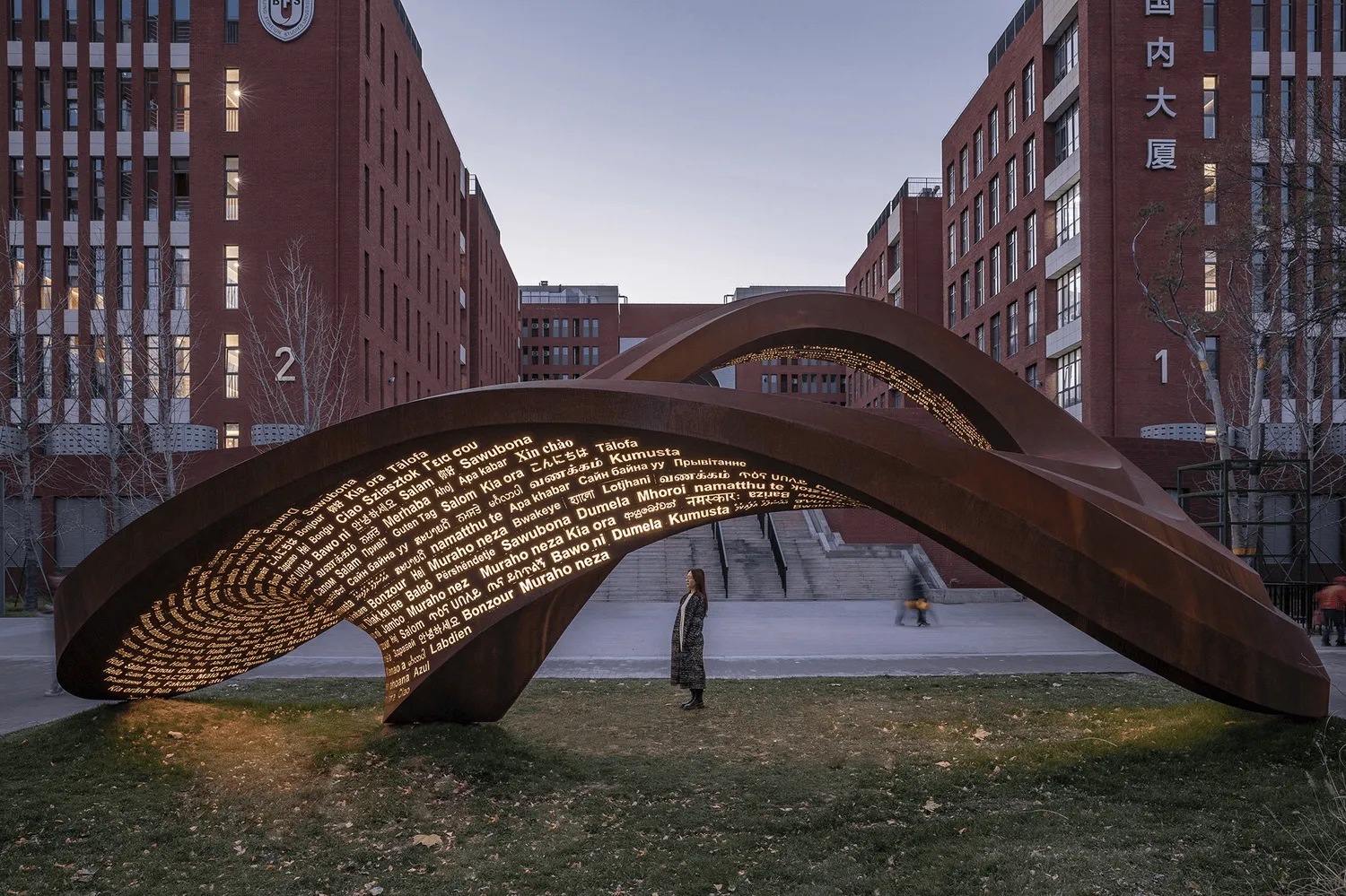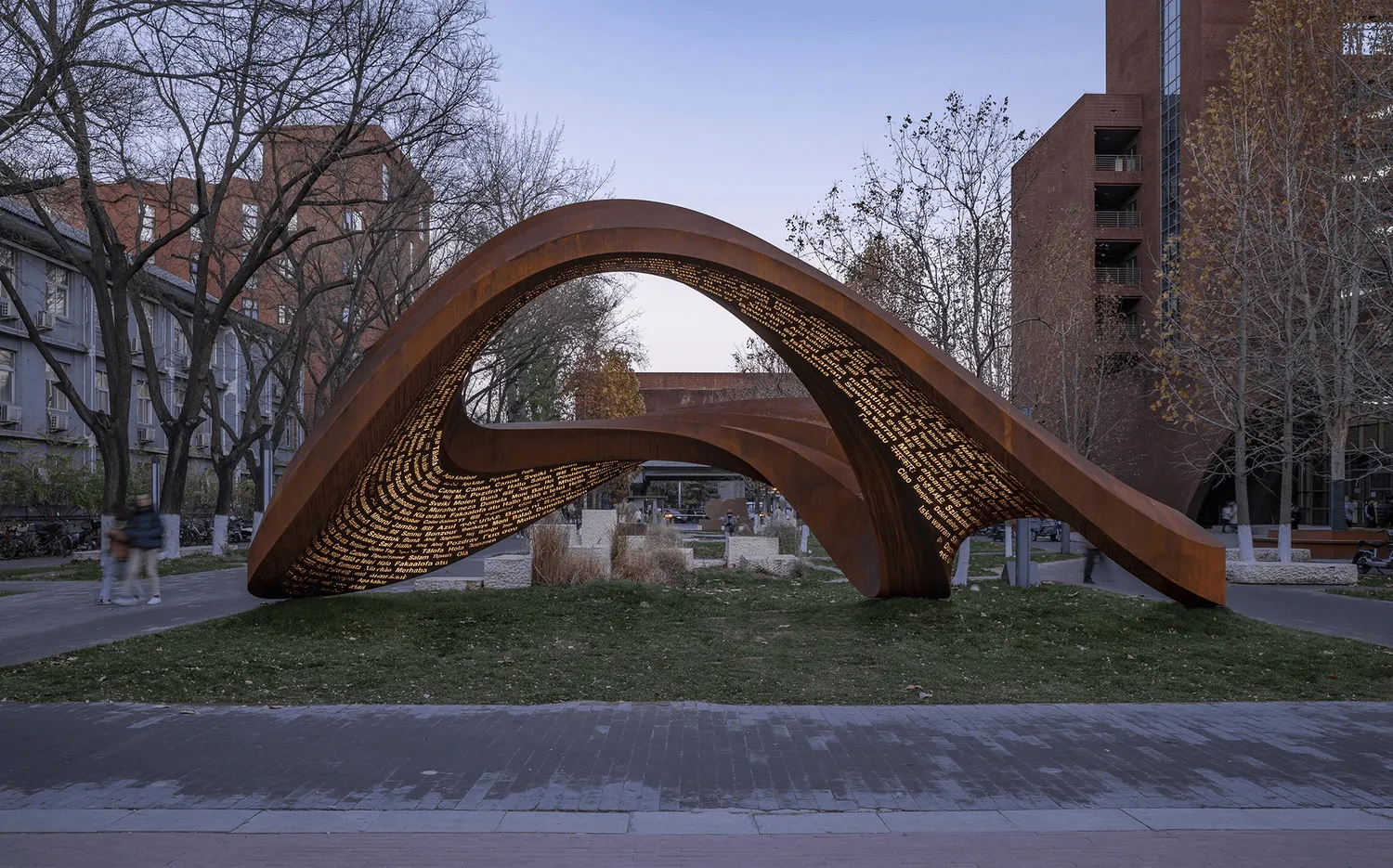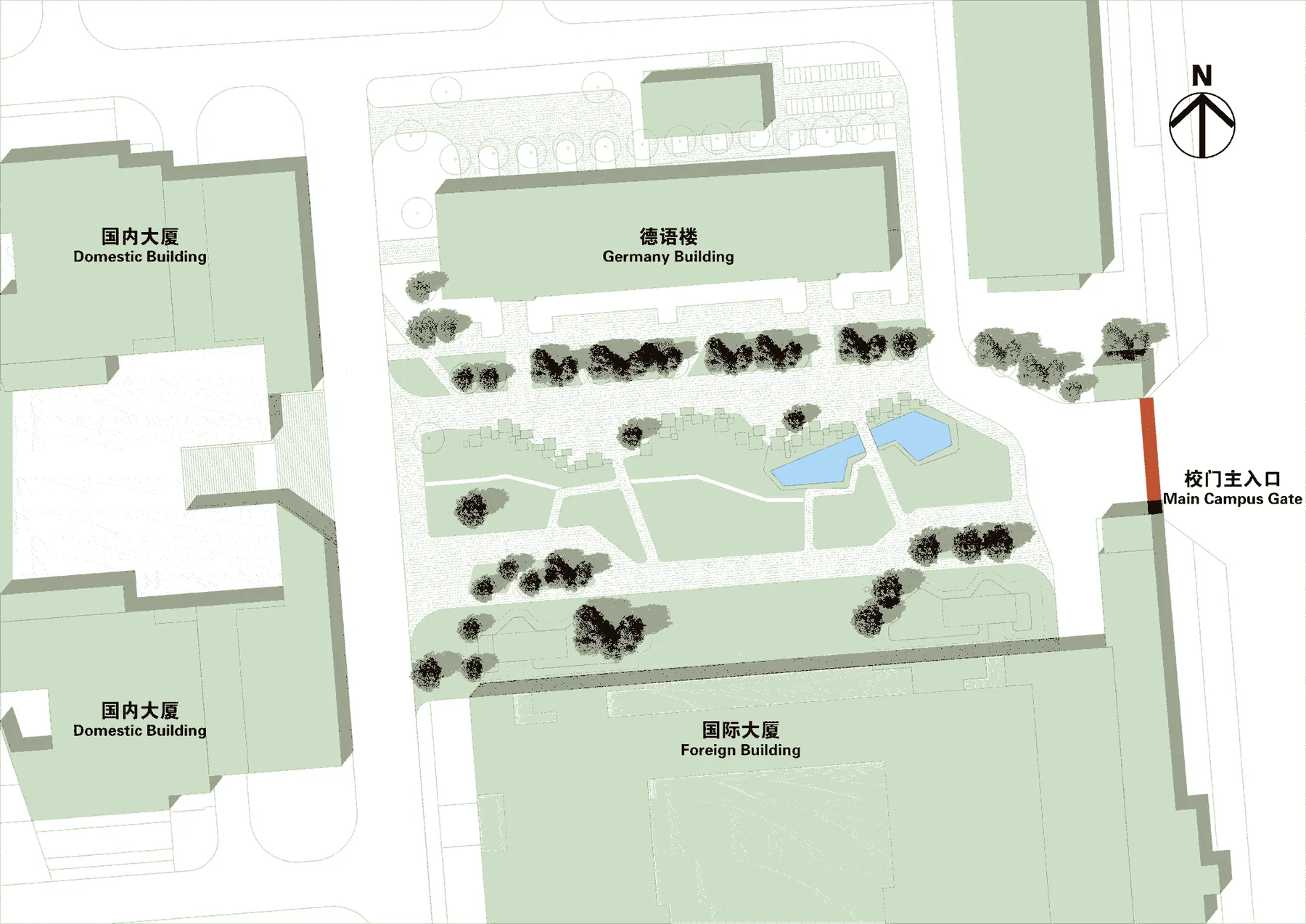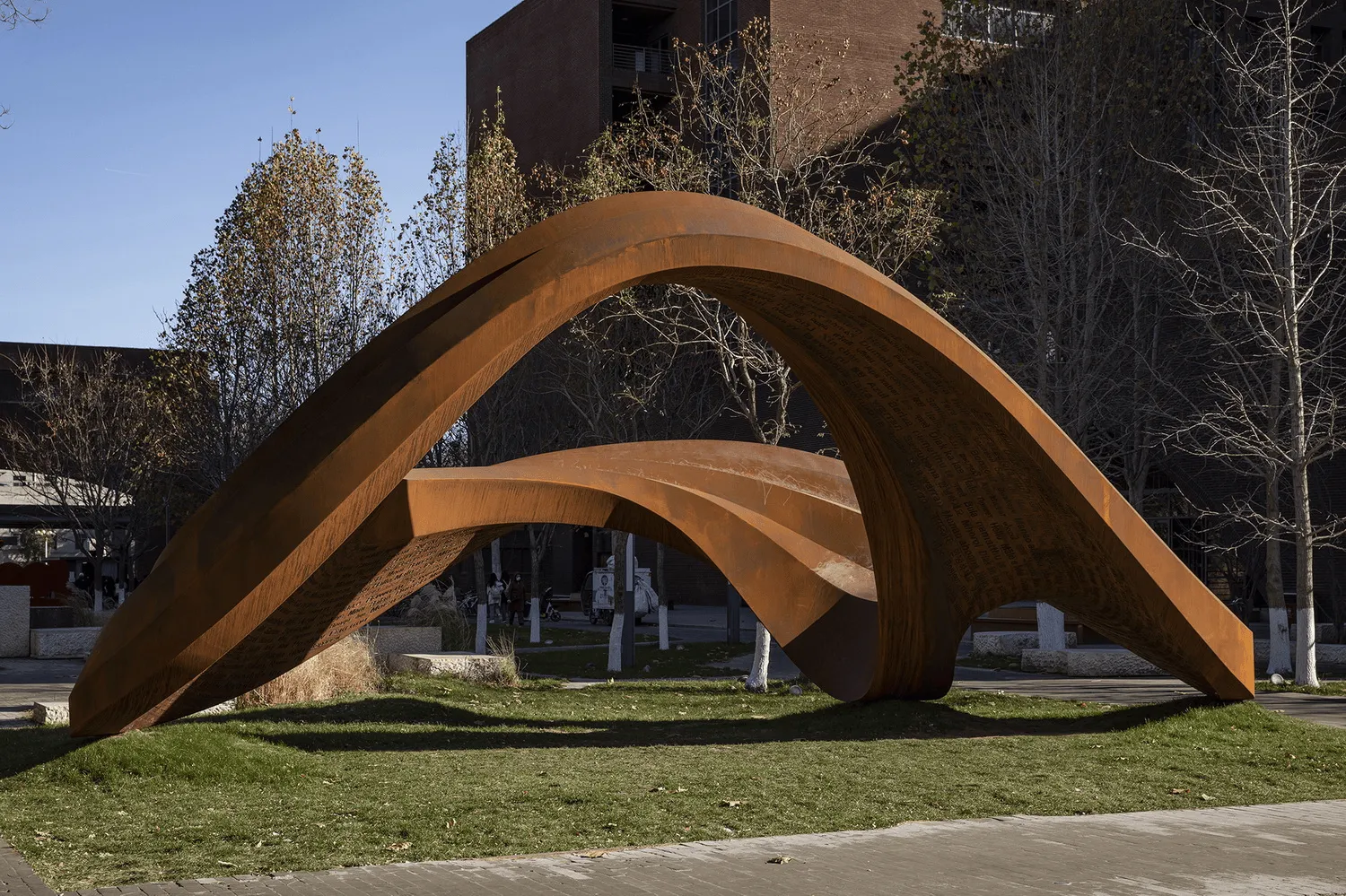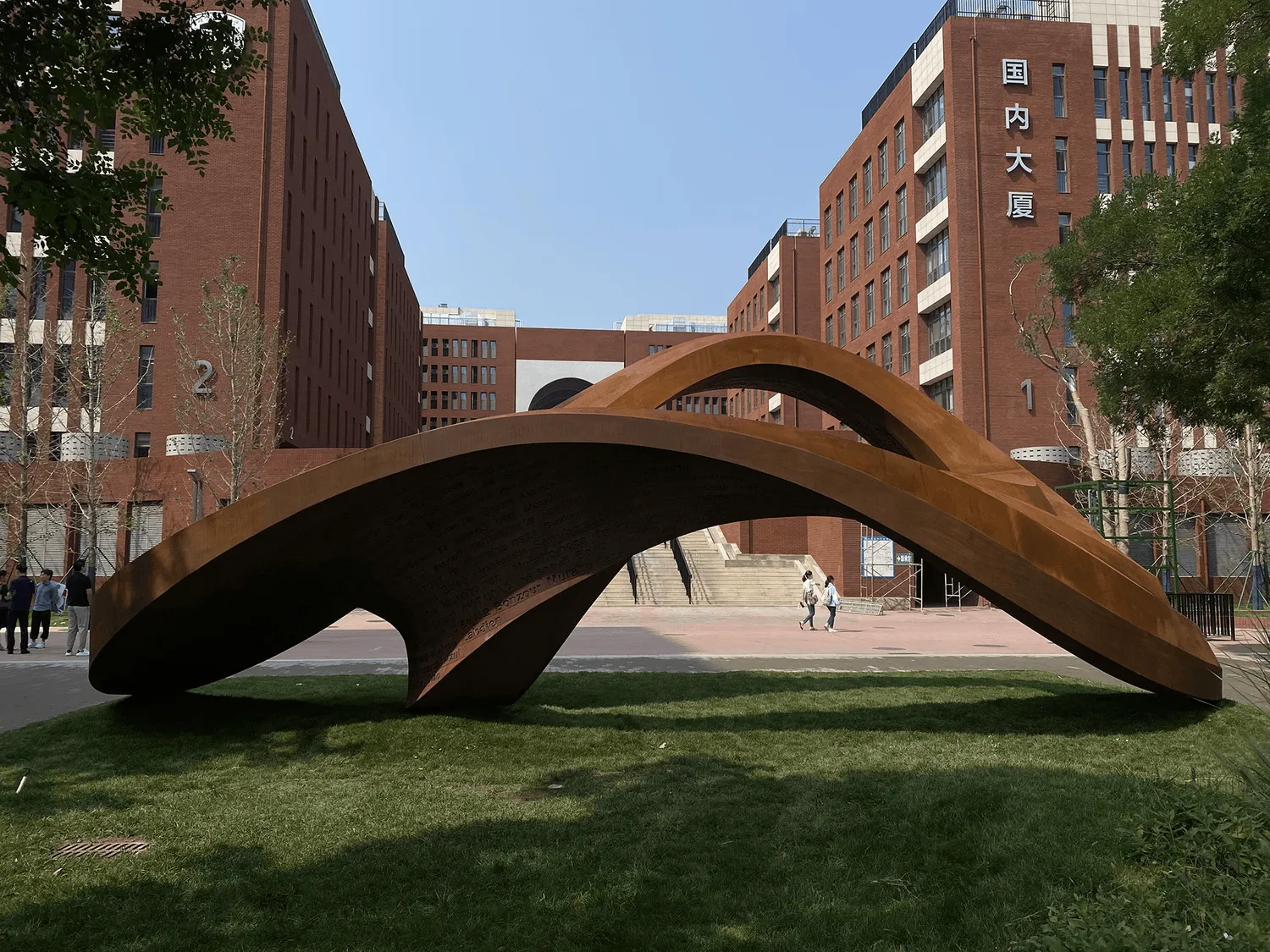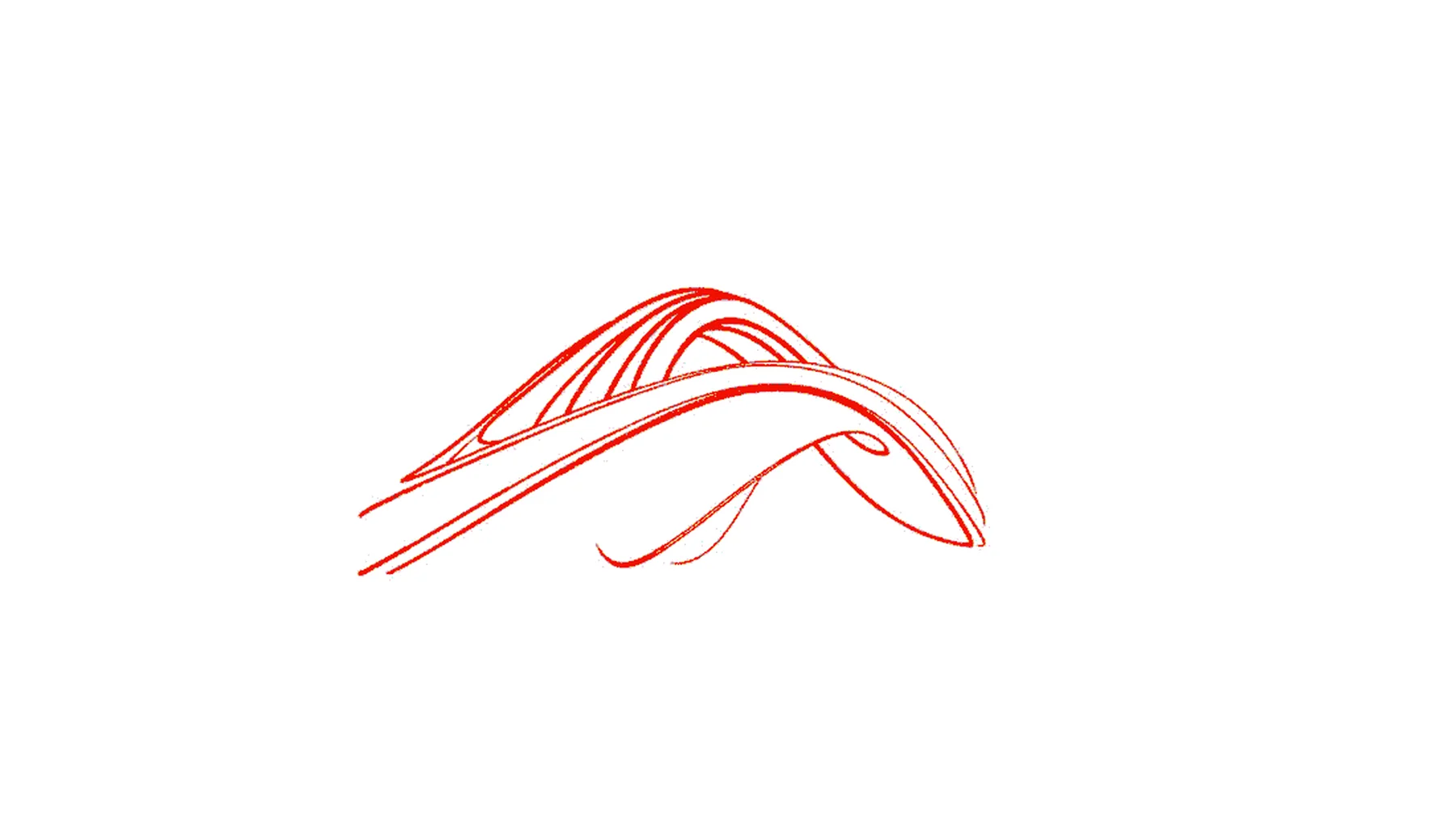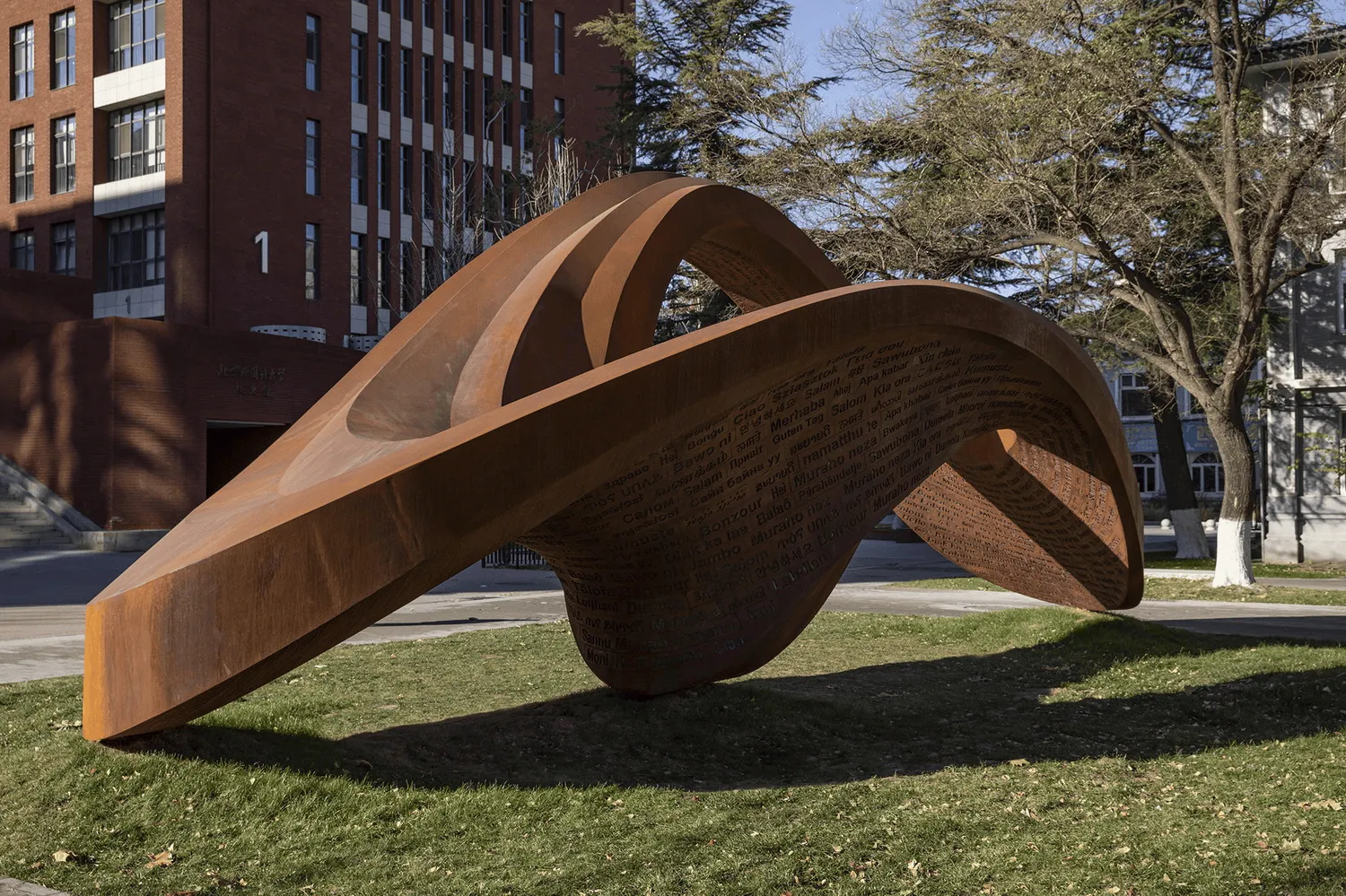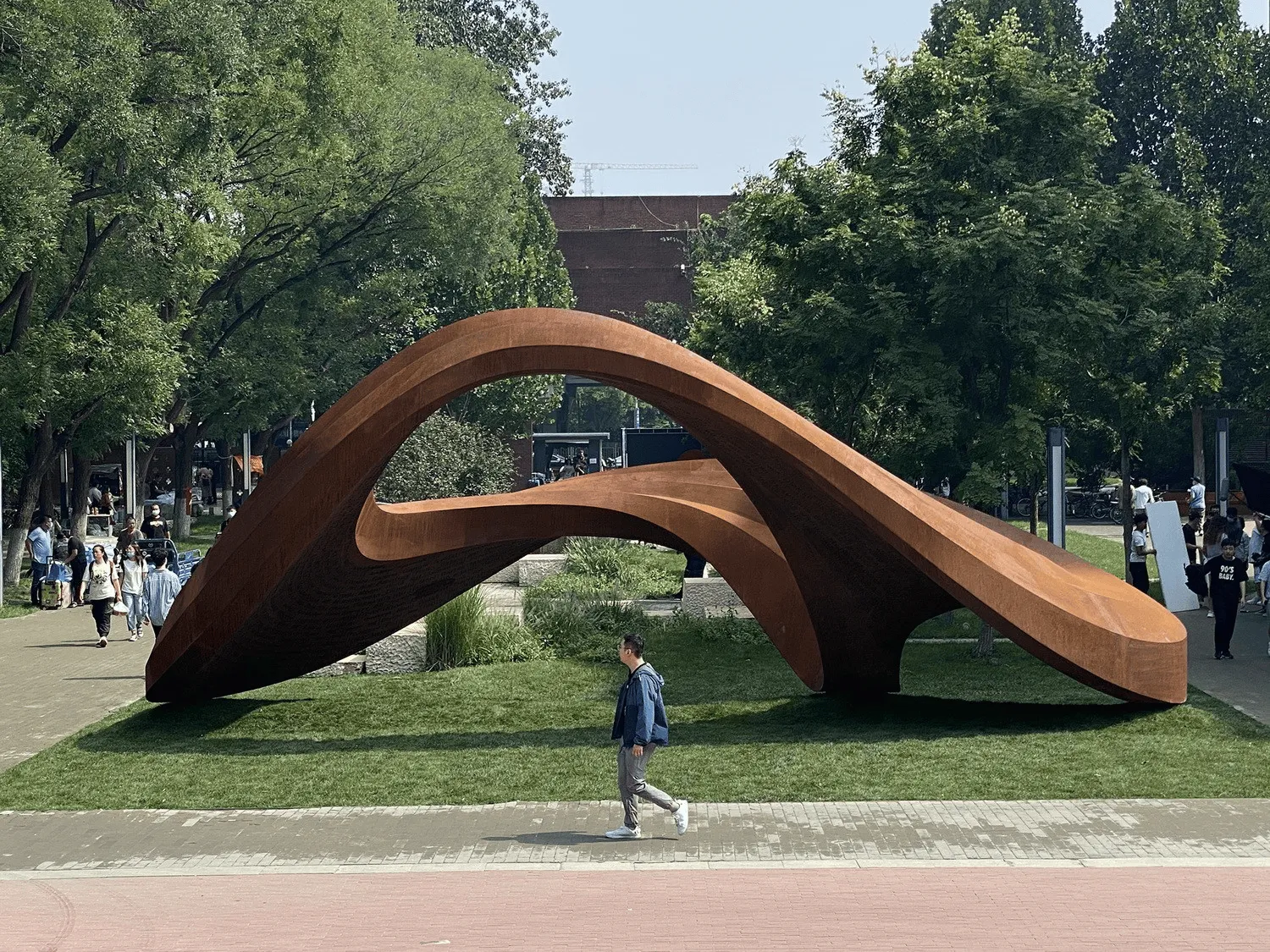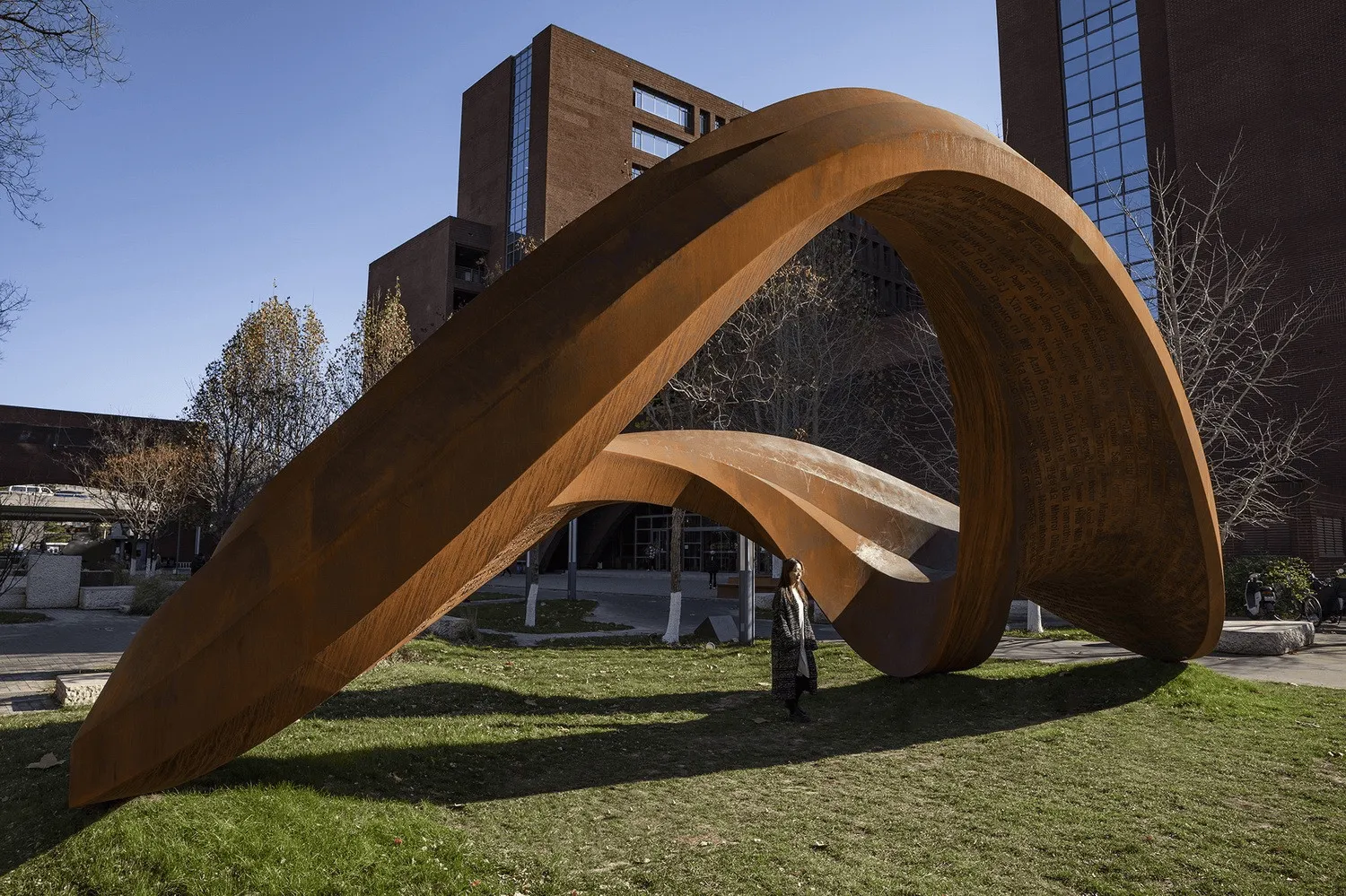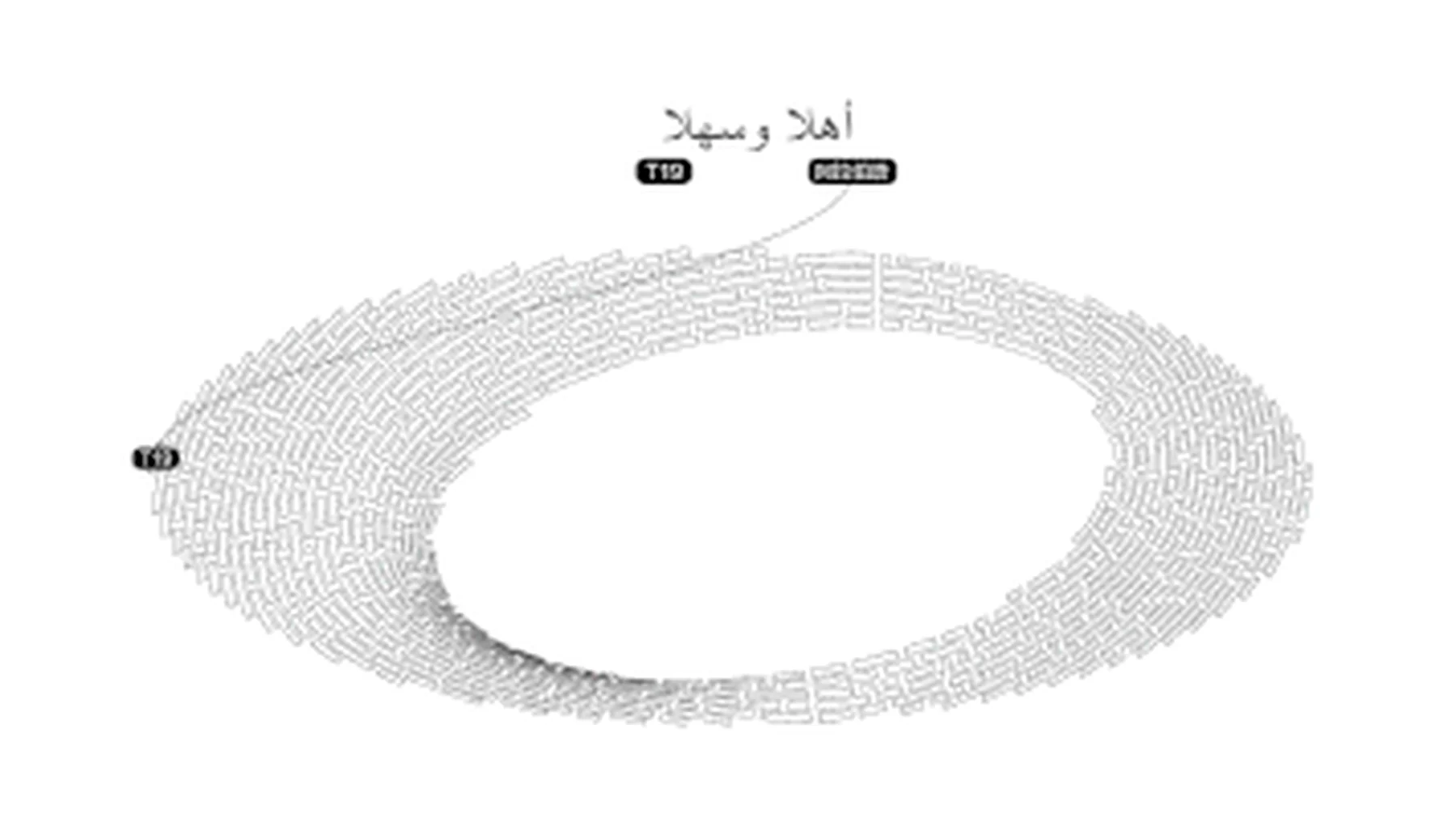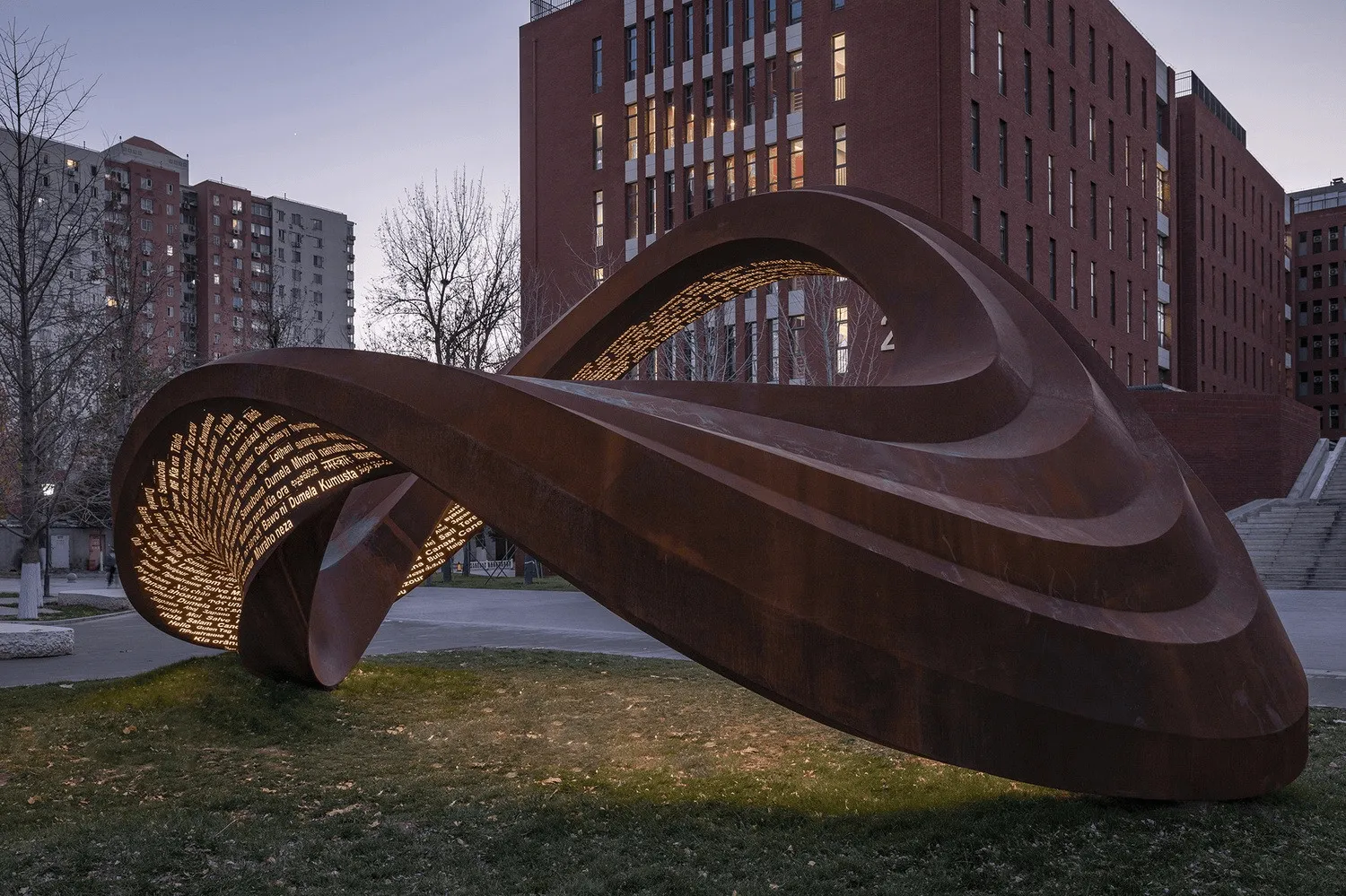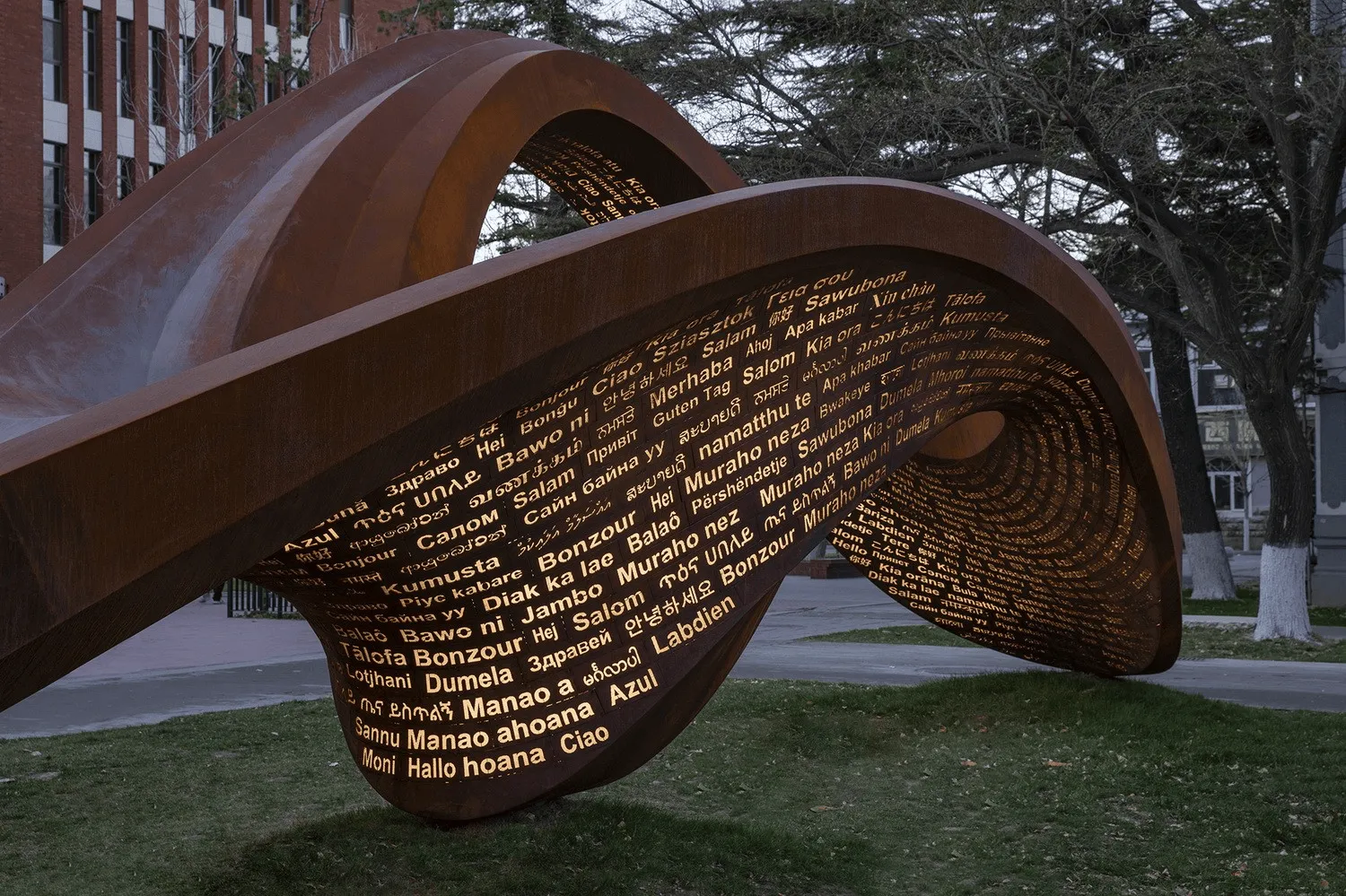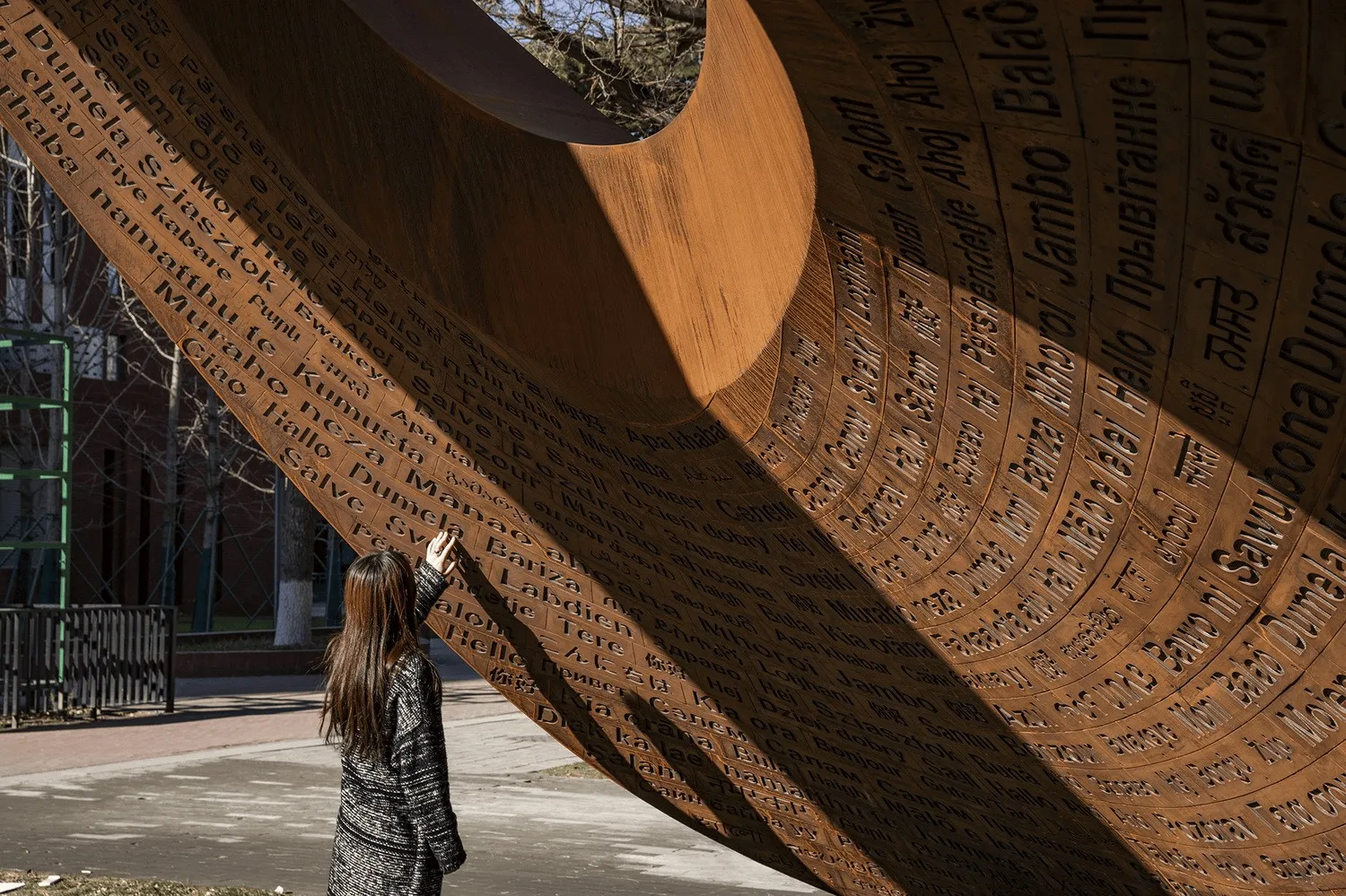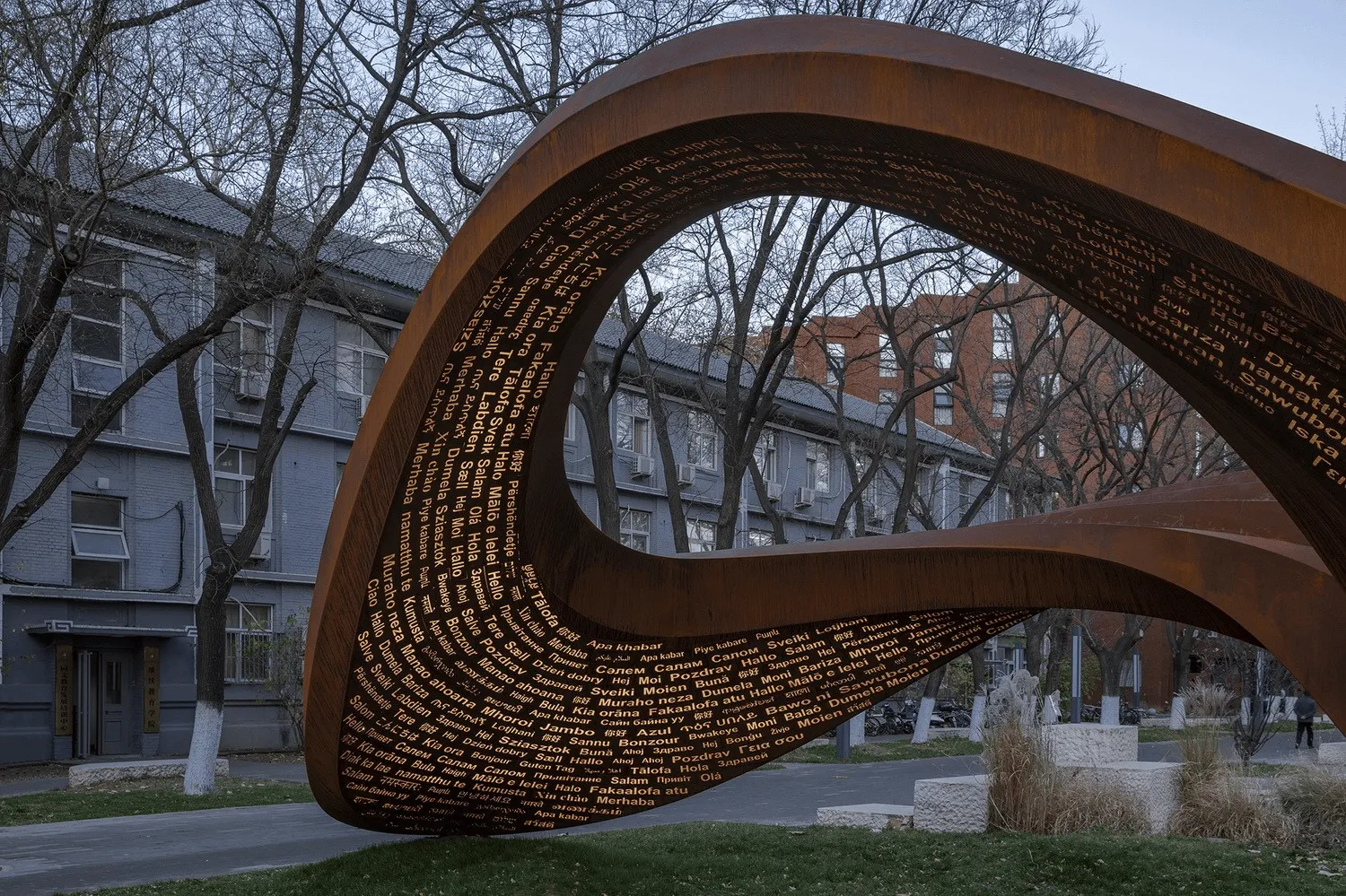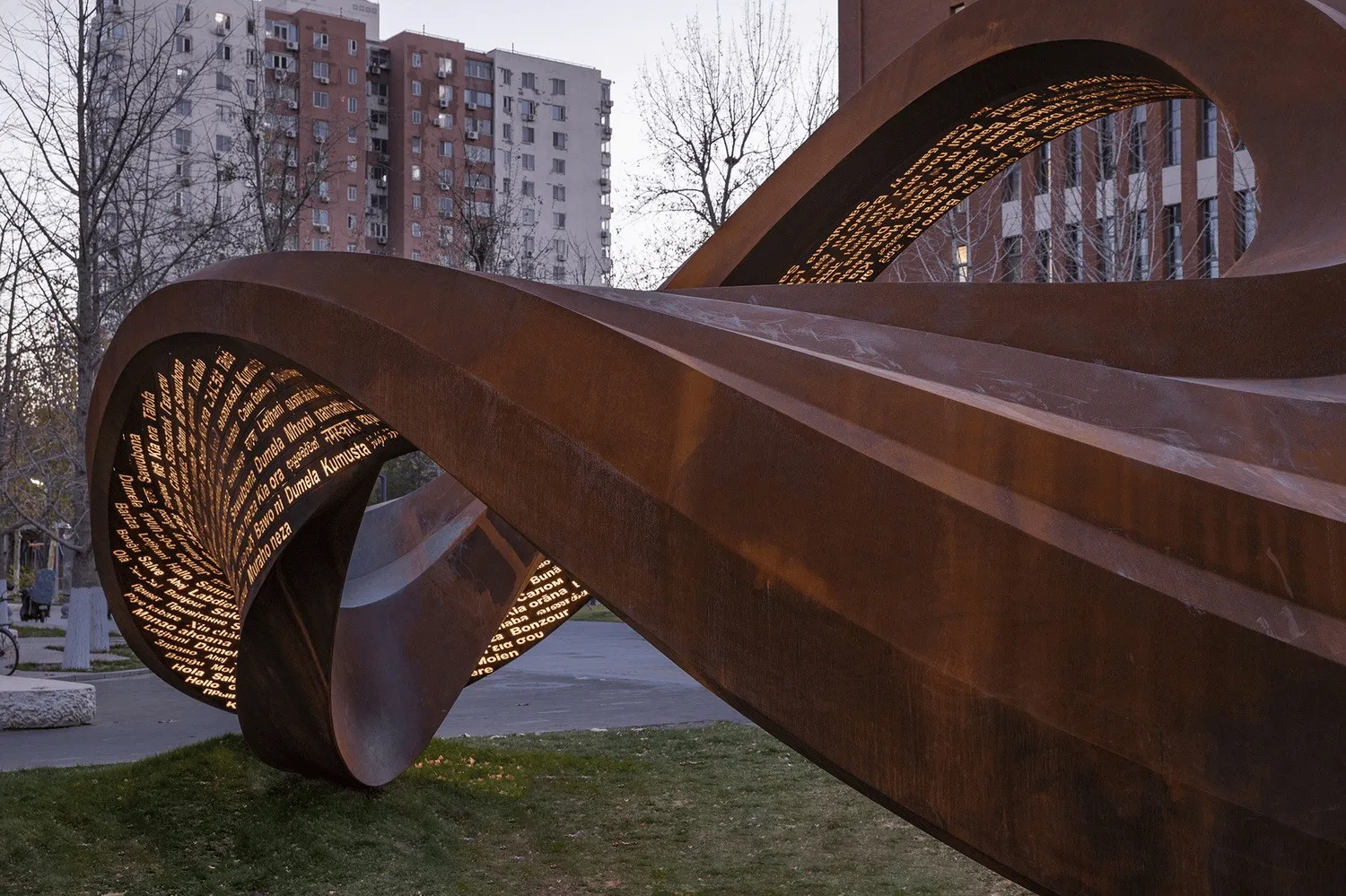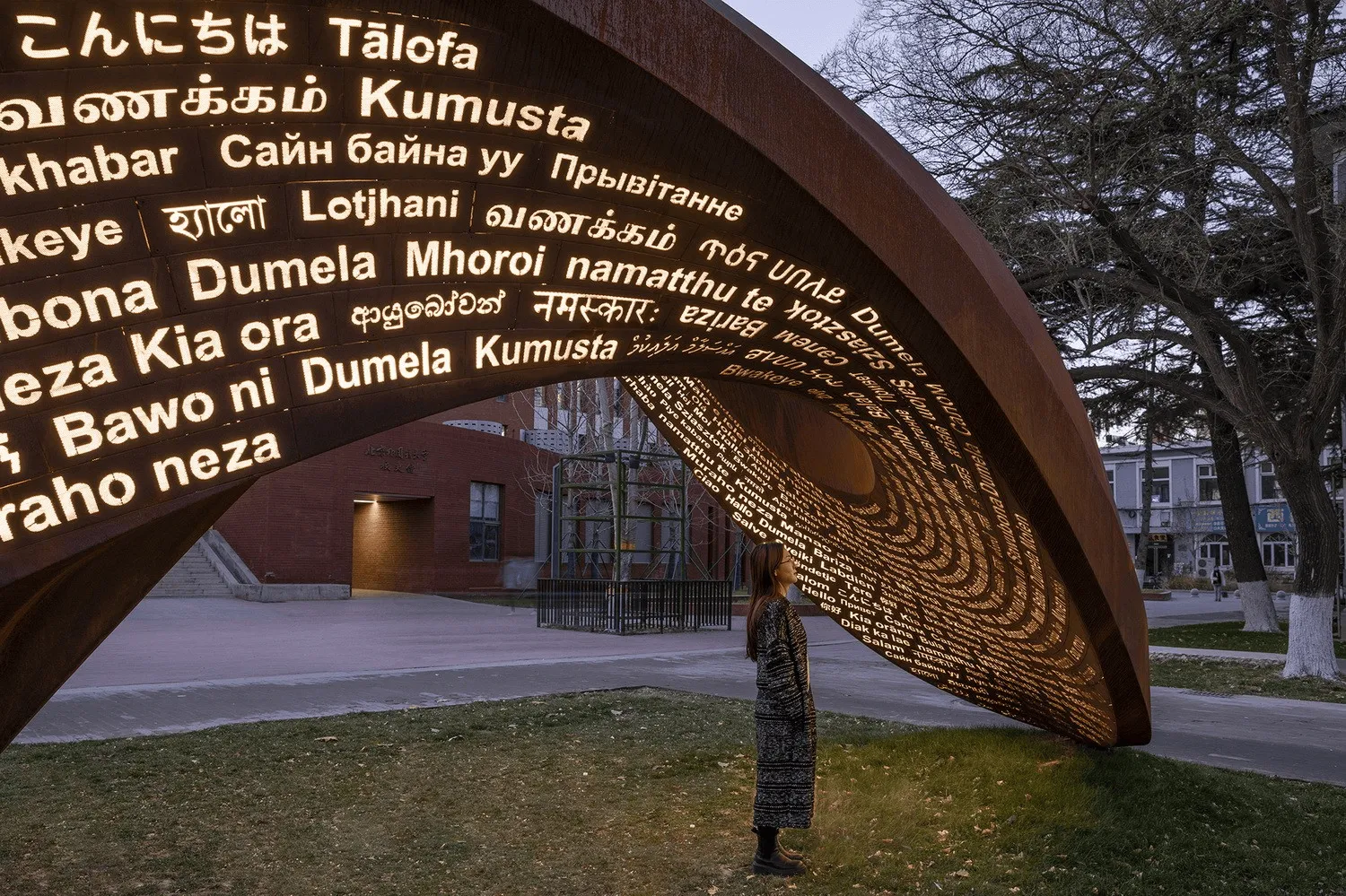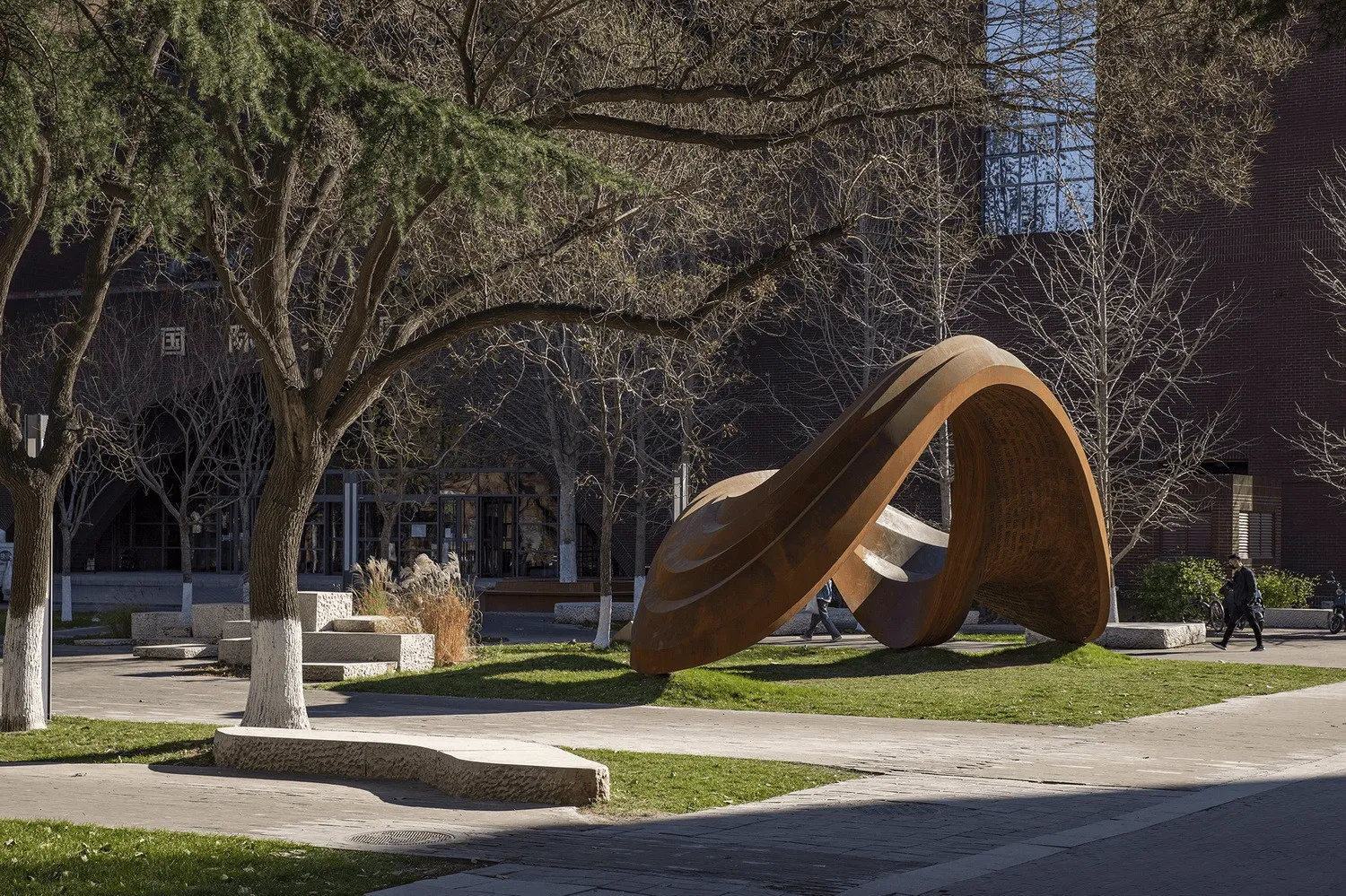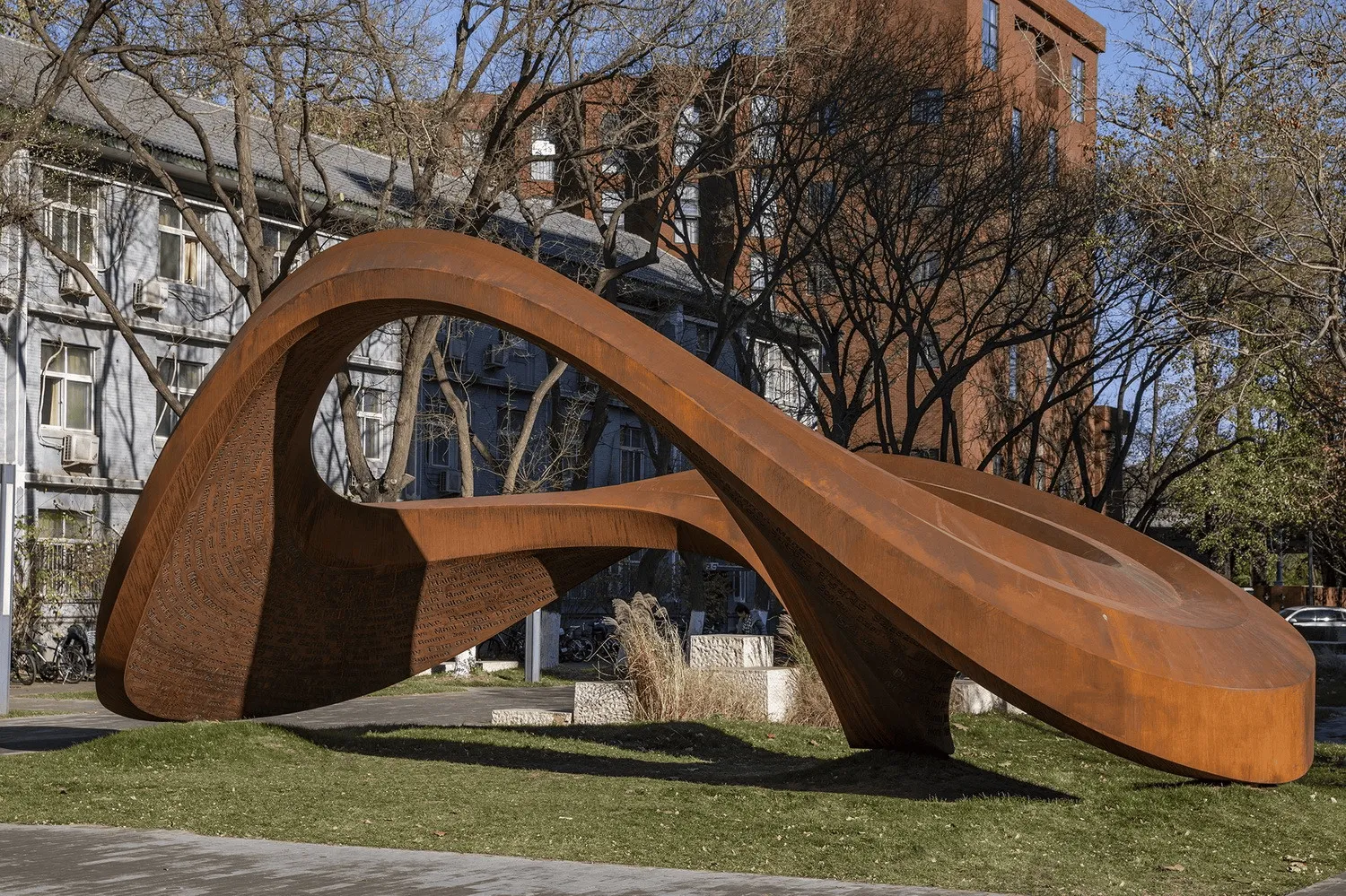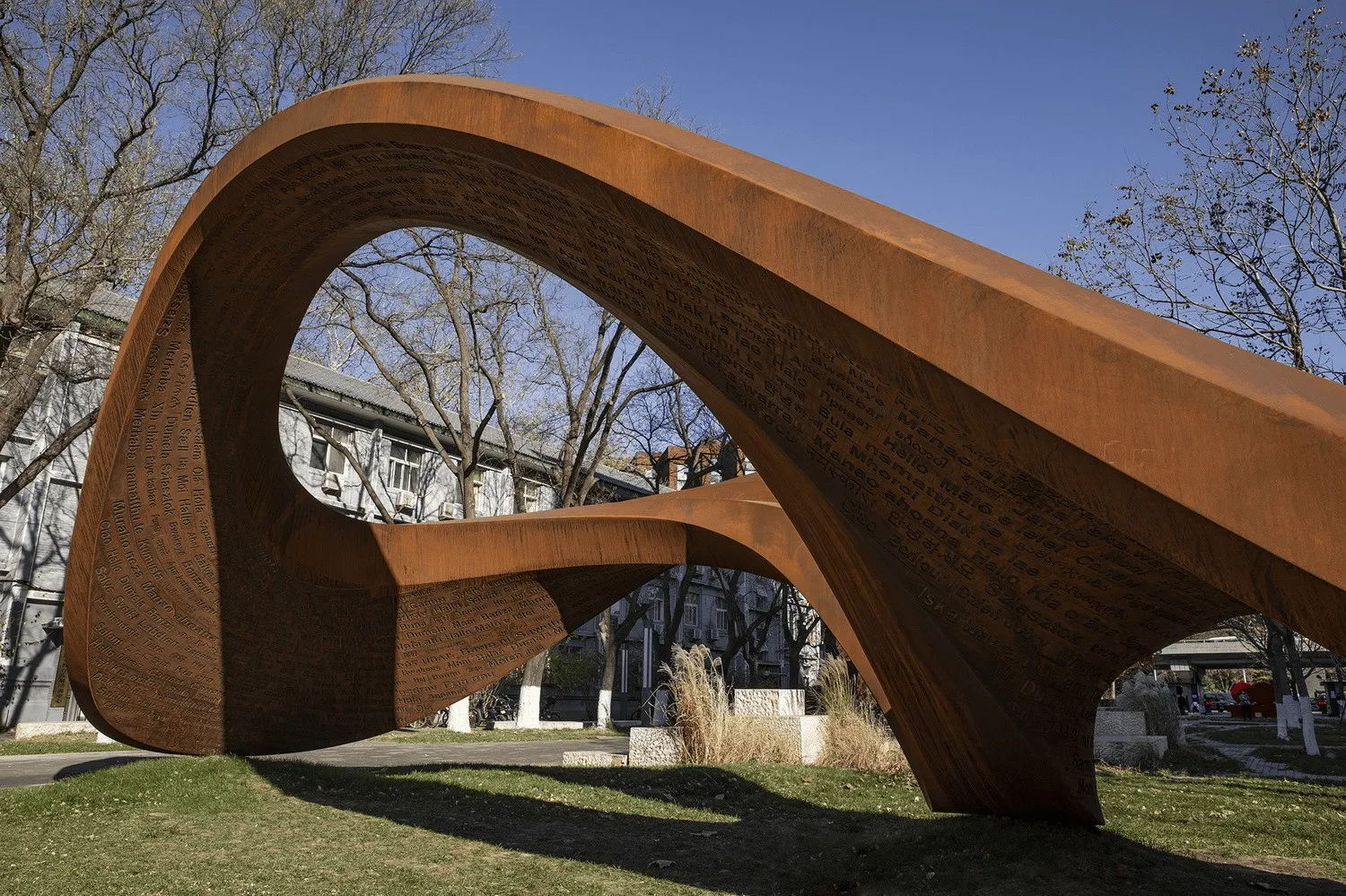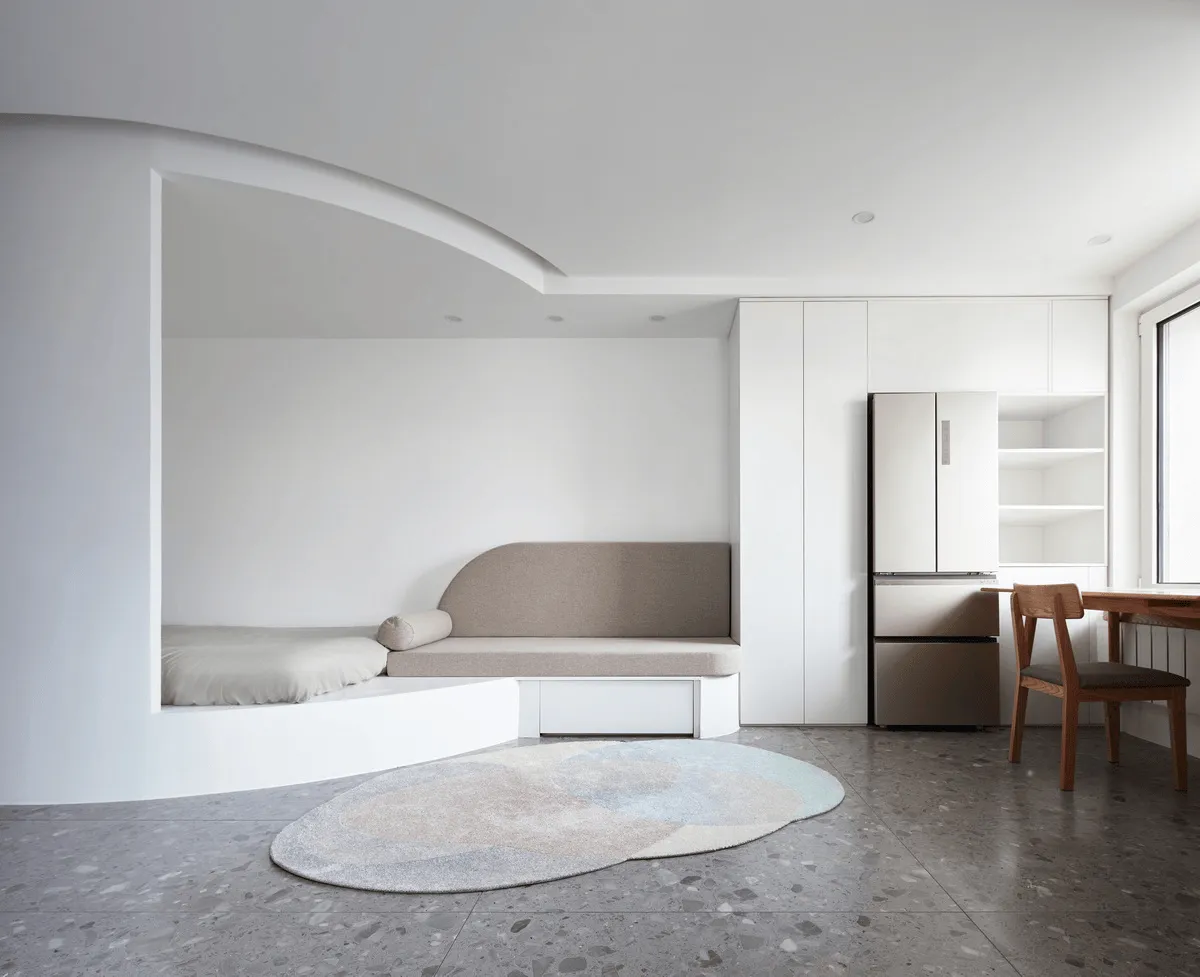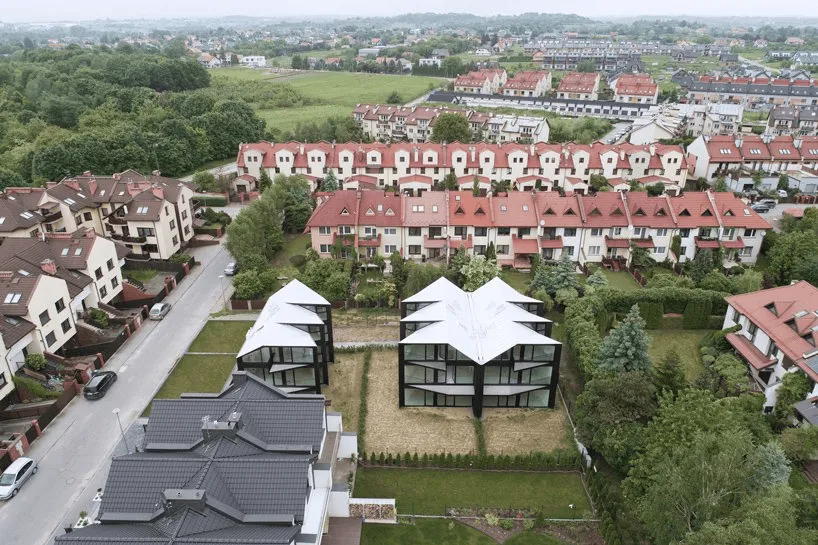The public art installation “Endless Possibilities” was created to celebrate the 80th anniversary of Beijing Foreign Studies University. Situated in the university’s West Campus central plaza, the piece serves as a testament to the institution’s role in cultivating highly skilled foreign affairs professionals, having produced over 400 ambassadors and 2000 counselors. This legacy has earned Beijing Foreign Studies University the esteemed title of “Cradle of China’s Diplomats.”
The installation’s conceptual foundation draws inspiration from the interpretation of Beijing Foreign Studies University’s spirit and mission – communication, exchange, and connection. The artwork’s form is a visual and spatial embodiment of these core principles.
The installation’s location was strategically selected to address the spatial challenges presented by the West Campus central plaza. While the West Campus gate and the main teaching building (Domestic Building) are not aligned on the same axis, the offset creates two distinct axes, leading to spatial disorientation for those entering the plaza. This spatial conflict became the impetus for the artwork’s fundamental form, as a vertical form would only exacerbate the spatial mismatch. Conversely, a horizontal form could effectively blur the dual axes, anchoring the installation as a focal point.
The artwork’s form is a result of a meticulous analysis of the spatial context and a deliberate response to the desired outcome. The goal was to visually embody the essence of Beijing Foreign Studies University, emphasizing its spirit of communication, exchange, and connection. Consequently, the chosen form is an elliptical structure that extends and undulates through space, forming an arch that symbolizes communication, connection, and endless possibilities.
The arch structure evokes a bridge-like form, further highlighting Beijing Foreign Studies University’s role as a bridge for intercultural exchange and foreign affairs. This installation is more than just a visual element; it’s a functional space designed for interaction and experience, serving as a seamless blend of spatial environment and autonomous domain.
To enhance the artwork’s accessibility and readability, the inner surface of the structure is adorned with 101 different languages writing “hello.” This linguistic tapestry encompasses all the languages taught at Beijing Foreign Studies University, extending a warm greeting to the world. The installation’s materials embody the spirit of the artwork. Constructed from 5mm thick weather-resistant steel, the piece resonates with the surrounding environment, particularly the main teaching building’s dark red brick facade. The use of weather-resistant steel reinforces the installation’s desired aesthetic: a powerful and dynamic presence with a sense of gravitas.
From a technical standpoint, the inscription of the 101 greetings on the inner surface of the installation was the most challenging aspect of the project. The process demanded close collaboration between the artist and the fabricators to flawlessly translate the digital 3D design into a physical reality. The presence of these 101 greetings grounds the artwork within the specific context of the university, forging a bond between the abstract installation and the surrounding environment. This inscription imbues the artwork with warmth and approachability, fostering a sense of connection and shared experience.
Project Information:


